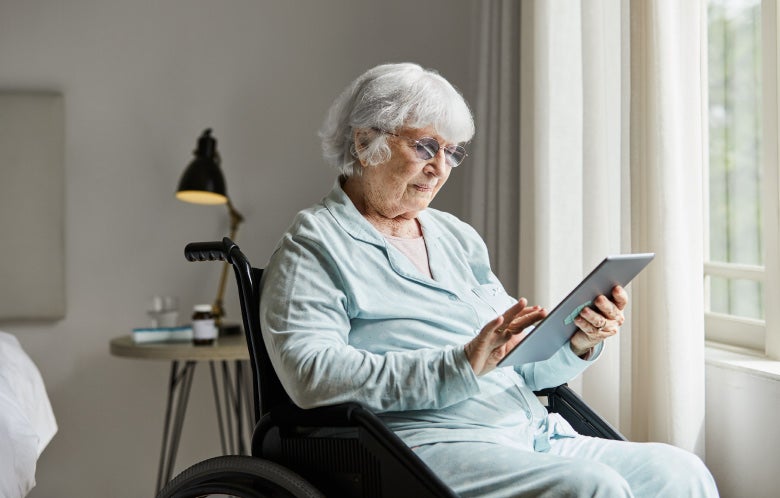A comprehensive geriatric assessment (CGA) is a multidisciplinary process that examines all aspects of a patient’s life (psychosocial, physical, and neurocognitive domains) and may be most helpful when people have a triggering event like a fall or hospitalization. A good CGA systematically looks at a patient’s entire living situation, not just the proximate cause of the triggering event. A recent multicenter study evaluated the hypothesis that a hospital-at-home (HAH) model that includes a CGA might be better than inpatient management for older adults.
Researchers from Oxford recruited 1,055 patients from nine sites throughout the United Kingdom who were older than 65, physiologically stable, and referred for hospitalization. One-third of participants were randomized to receive usual care in the hospital. The remaining two-thirds were randomized to a combined HAH-CGA model that provided a CGA along with multidisciplinary caregivers, testing, and in-home therapies such as IV medication. It should be noted that crossover occurred when 37 patients allocated to the HAH-CGA group deteriorated during the evaluation period and required hospital admission, and 76 patients randomized to hospitalization ended up in the HAH-CGA arm because of patient preference or a shortage of inpatient beds.
The primary outcome, living at home at six months after referral, occurred at the same rate in both groups (relative risk [RR] 1.04, 95% CI 0.94-1.16), as did the risk of death. On the other hand, the risk of living in long-term residential care was clinically and statistically reduced for patients allocated to the HAH group at six months (RR 0.54, 95% CI 0.43-0.69) and one year (RR 0.57, 95% CI 0.45-0.73). The only other significantly different outcome was that HAH patients were more likely to end up being re-admitted to the hospital after discharge from the program within one month (RR 1.33, 95% CI 1.07-1.65).
When authors take the unusual step of unequal allocation ratios, most don’t explain why. To their credit, these authors do provide a reason, stating that the HAH-CGA service was “established to ease demand for acute hospital beds.” That is a laudable goal, but from an EBM perspective, it weakens their conclusion, and most institutional review boards would consider it an unacceptable justification for unequal randomization. There are numerous ways that unequal randomization can introduce bias into a study, but probably the most relevant one here is that patients and their caregivers were aware of it. It’s natural for a trial participant to wonder why researchers would enroll twice as many people in an experimental intervention, and of course the natural assumption is that the researchers aren’t truly uncertain about which intervention is better. Unequal randomization, when it places more study participants into an experimental intervention, creates bias towards the intervention arm. This somewhat lopsided study of older patients demonstrates that a hospital-at-home model may be a reasonable alternative to inpatient hospital admission with equal risk of death but potentially lower risk of nursing home admission.
For more information, see the topic Comprehensive Geriatric Assessment in DynaMed.



